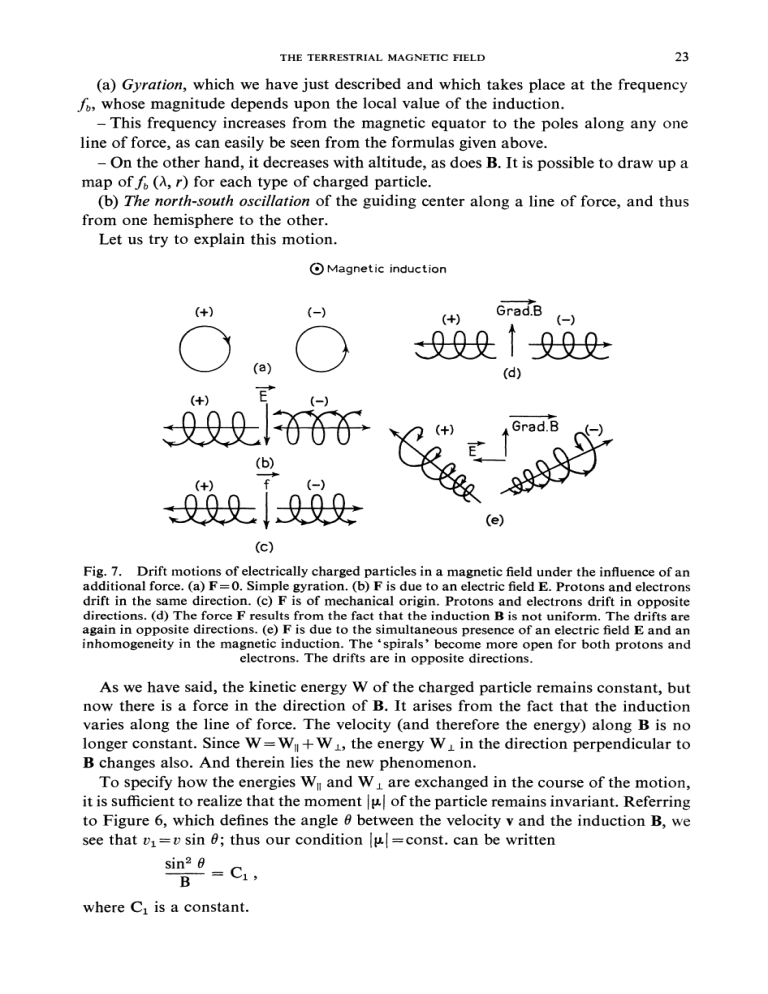
23 THE TERRESTRIAL MAGNETIC FIELD (a) Gyration, which we have just described and which takes place at the frequency Ib' whose magnitude depends upon the local value of the induction. - This frequency increases from the magnetic equator to the poles along anyone line of force, as can easily be seen from the formulas given above. - On the other hand, it decreases with altitude, as does B. It is possible to draw up a map of h (,\, r) for each type of charged particle. (b) The north-south oscillation of the guiding center along a line of force, and thus from one hemisphere to the other. Let us try to explain this motion. o Magnetic induction o -o (-) (a) E (+) (+) -- Grad.S (-) &QJt t JtQJC Cd) (-) &QJL!:olff ~+)E.-JjGr;d.8,. ~ (-) (b) (+) ~ (-) ~1JUUl: ~ (e) (c) Fig. 7. Drift motions of electrically charged particles in a magnetic field under the influence of an additional force. (a) F=O. Simple gyration. (b) F is due to an electric field E. Protons and electrons drift in the same direction. (c) F is of mechanical origin. Protons and electrons drift in opposite directions. (d) The force F results from the fact that the induction B is not uniform. The drifts are again in opposite directions. (e) F is due to the simultaneous presence of an electric field E and an inhomogeneity in the magnetic induction. The' spirals' become more open for both protons and electrons. The drifts are in opposite directions. As we have said, the kinetic energy W of the charged particle remains constant, but now there is a force in the direction of B. It arises from the fact that the induction varies along the line of force. The velocity (and therefore the energy) along B is no longer constant. Since W = W II +W 1., the energy W 1. in the direction perpendicular to B changes also. And therein lies the new phenomenon. To specify how the energies W II and W 1. are exchanged in the course of the motion, it is sufficient to realize that the moment IIII of the particle remains invariant. Referring to Figure 6, which defines the angle 8 between the velocity v and the induction B, we see that VI =V sin 8; thus our condition IIlI =const. can be written sin 2 8 = C I B ' where C I is a constant.




